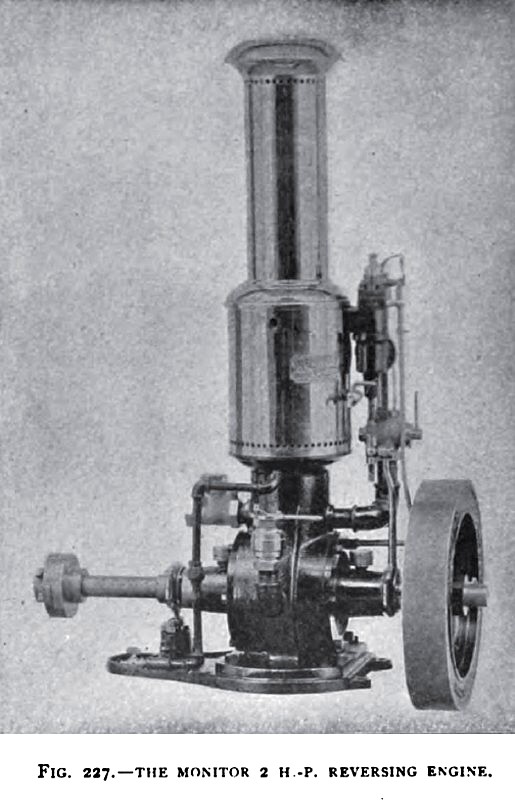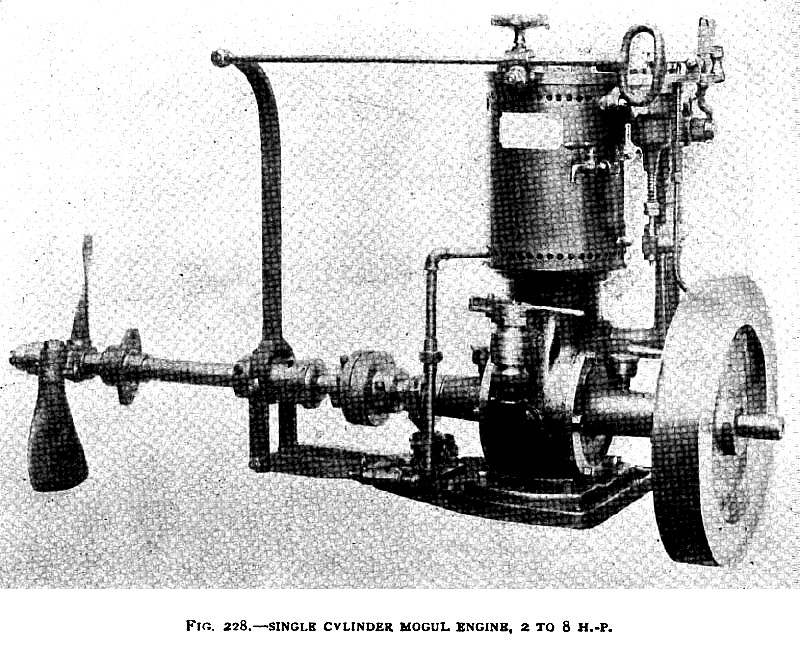|
Title: |
1898 Article-Monitor Vapor Engine & Power Co., 2 H. P. Gas Engine |
|
Source: |
Gas, Gasoline and Oil Vapor Engines, 1898 pgs 302-303 |
|
Insert Date: |
10/22/2012 9:29:21 AM |
The Monitor Gasoline Engine.
The engines of the Monitor Vapor Engine and Power Co., Grand Rapids, Mich., are of the two-cycle class, exhausting the exploded charge through cylinder-ports which are opened by the piston near the end of its stroke. The crank is enclosed in a chamber into which the free air is drawn through an adjustable opening and check-valve. At the upper part of the crank chamber the gasoline vapor enters through a pipe and safety tube from the carburetor placed at the bow of the boat; it is drawn into the crank chamber with the adjusted quantity of free air through the regulator by the suction of the piston in its up-stroke. The air and gas vapor are mixed by the motion of the crank and compressed by the downward stroke of the piston; and at the moment of the opening of the exhaust, the charging valve opens by a cam motion and the compressed charge enters the cylinder i1nder the head and in proximity to the igniter. The np-stroke of the piston compresses the charge and at the same time draws into the base a fresh charge of air and vapor. The volume of the charge is regulated by a cock and graduated lever in the pipe leading from the upper part of the crank chamber to the valve chamber. A separate cam operates the electric igniter by a push-rod, which lifts a lever and small rod moving freely through a socket, breaking contact of its end with an insulated electrode within the charging valve chamber. The water-circulating pump is operated by an eccentric on the main shaft.
The smaller boat engines are built to run either way, the reversal requiring only the closing of the throttle valve to stop the engine, when, on turning the wheel the other way and opening the throttle, the engine quickly starts on the reverse. motion. The high stacks on these engines are for carrying the exhaust above the heads of people in the boats, but are not necessary, as the exhaust is also piped down and out at the stern. The engines from 2 H. P. up are also arranged with reversing propellers, the reversal of which are operated through a hollow shaft and sliding coupling, lever, and push-rod, as shown in Fig. 228, which shows the engine without the stack and as arranged for stern exhaust, and is named the "Mogul."
The 10, 12, and 16 H.-p. engines have double cylinders and independent crank chambers. There is but little difference in the design as between the "Monitor " and "Mogul," only that the "Mogul " is less finished and rates at a lower price. The working parts of the Mogul are first class.
The Monitor Co. also makes a line of stationary engines for gas and gasoline. |
|
 1898 Monitor Vapor Engine & Power Co., 2 H. P. Gas Engine
1898 Monitor Vapor Engine & Power Co., 2 H. P. Gas Engine
 1898 Monitor Vapor Engine & Power Co., Single Cylinder Mogul Gas Engine
1898 Monitor Vapor Engine & Power Co., Single Cylinder Mogul Gas Engine
|
|